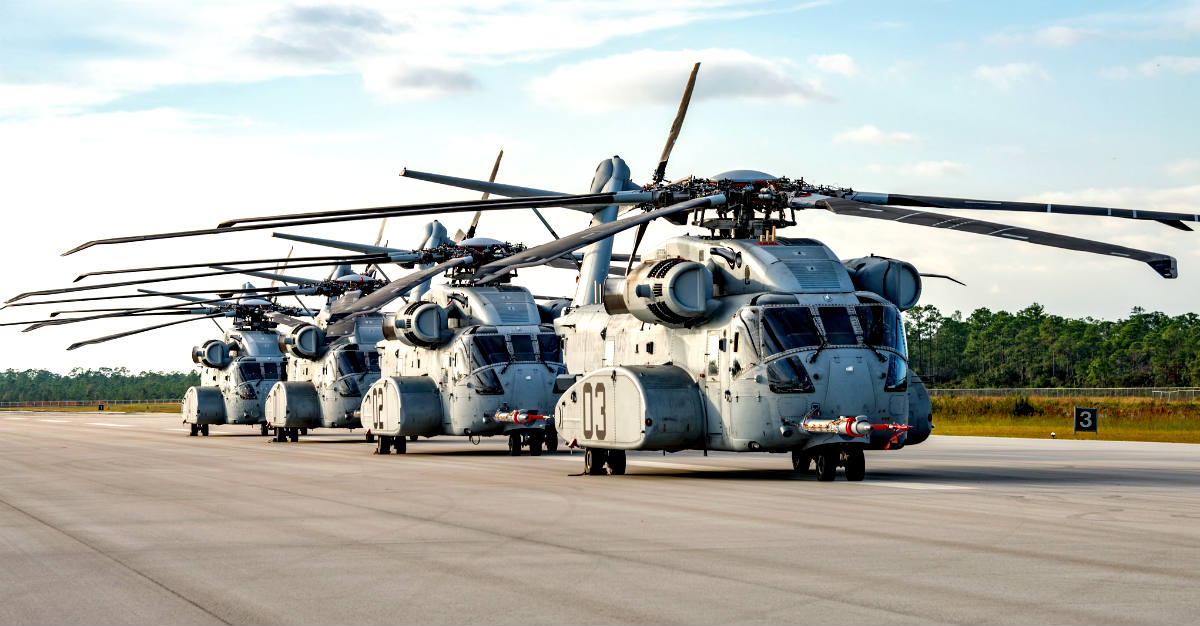The CH-53K King Stallion: A Leap Forward in Marine Corps Aviation
The CH-53K King Stallion, a formidable addition to the United States Marine Corps’ aviation arsenal, has made headlines as it achieves initial operational capability (IOC). This impressive helicopter not only holds the distinction of being the largest in the Marine Corps but also stands as the most powerful helicopter within the entire Department of Defense.
The CH-53K King Stallion’s significance lies not only in its size but in its capabilities. It can effortlessly lift three times the weight of its predecessor, making it an invaluable asset for the Marines when it comes to swiftly transporting personnel and equipment from ships to shores and throughout littoral regions.
A recent press release from the U.S. Marine Corps hailed the achievement of initial operational capability for the CH-53K King Stallion, marking a crucial milestone in its deployment readiness. LTG. Mark Wise, Deputy Commandant for Aviation, expressed his confidence in the helicopter’s heavy-lift capabilities, attributing it to successful testing carried out by Air Test and Evaluation Squadron (HX) 21 and Marine Operational Test and Evaluation Squadron (VMX) 1.
Initial operational capability, as defined, means that the platform is ready for deployment and maintenance but has not yet been distributed to all units, signifying a significant step toward full deployment.
Sikorsky, the aerospace firm responsible for the King Stallion’s design, proudly announced on Twitter that the U.S. Marine Corps had declared initial operational capability for the CH-53K, validating its readiness for global deployment in forwarding Marines and equipment.
The King Stallion aligns with the Marine Corps’ Force Design 2030 update by complementing existing ship-to-shore connectors and enhancing the Corps’ maneuverability in littoral areas. Its three engines provide a remarkable 57% increase in horsepower with 63% fewer parts compared to its predecessor, enabling it to lift three times the weight of the CH-53E.
What sets the King Stallion apart is its ability to maintain peak performance even in challenging environments, referred to by the Marine Corps as a “degraded aeronautical environment.” For instance, it can operate at higher altitudes, hotter climates, and carry up to 27,000 pounds of cargo up to 110 nautical miles, a feat far beyond the capabilities of its predecessor.
Despite its achievements, the journey of the CH-53K King Stallion has had its share of challenges. During development, over 100 technical issues needed to be addressed, with gas exhaust reingestion being a significant concern that adversely affected its power. With these engine problems now resolved, the Marine Corps’ heavy-lift helicopter is poised to move forward with confidence.
Lieutenant General Wise acknowledged the dedicated efforts of Marines, sailors, and civilians involved in the CH-53K program, along with support from various Department of the Navy units and industry partners. Their collective hard work and perseverance have culminated in a formidable aerial asset that promises to play a pivotal role in Marine Corps operations.
In conclusion, the CH-53K King Stallion’s attainment of initial operational capability is a momentous achievement, and it represents a leap forward in the capabilities of the U.S. Marine Corps. With its exceptional lifting capacity and ability to operate in challenging environments, the King Stallion is poised to bolster the Marine Corps’ readiness and effectiveness in a wide range of missions.









